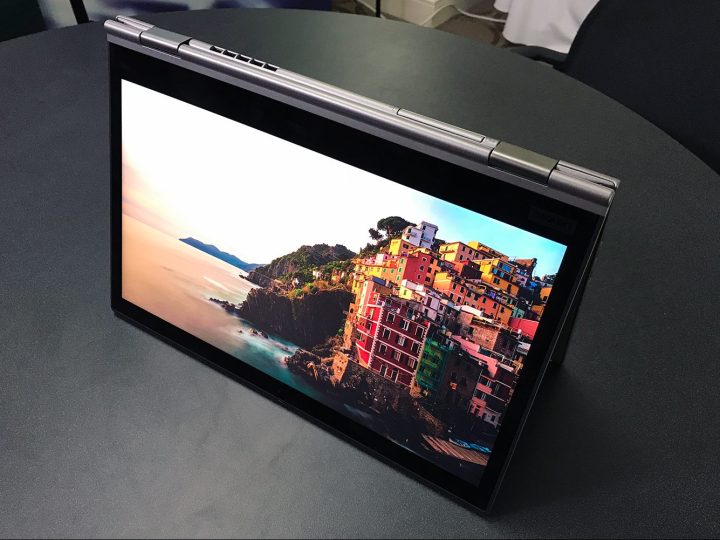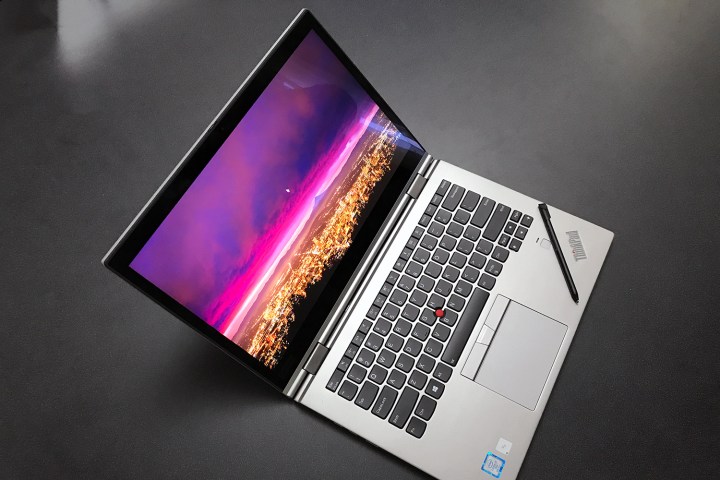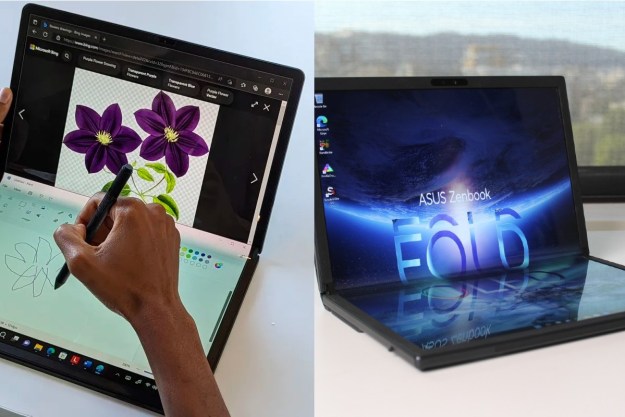
“Lenovo’s adds a stunning HDR display to its fast, feature-packed X1 Yoga 2-in-1.”
- Rugged design
- Great keyboard
- Beautiful HDR display
- High-performance hardware
- Doesn’t lose weight from prior year
- Extremely expensive
There are a lot of 2-in-1s available today, but if you’re looking for something durable and fast, the Lenovo X1 Yoga stands out. Lenovo is launching the third generation at CES. Though not a major change from past models, the X1 Yoga 3rd-gen adds a few intriguing features.
The headliner is undoubtedly the 14-inch Dolby Vision HDR touchscreen. With a maximum brightness of 500 nits and 2,560 x 1,440 resolution, it’s a looker, particularly when fed high-quality HDR content. This is the first HDR display to appear on a ThinkPad, and is meant as a replacement for the OLED screen, which is being discontinued.
With a brightness of 500 nits and 2,560 x 1,440 resolution, the Dolby Vision HDR screen is a looker.
We’ll be sad to see the OLED go. It was gorgeous and, to be honest, the HDR screen doesn’t quite measure up – though it does look excellent in its own way. The OLED’s demise is due to its power drain, which sucked down the battery quick. Lenovo thinks the
Lenovo has also added a physical privacy shutter to its camera, a handy security feature that the company seems to be adding to many of its device – and not necessarily just laptops.
Like past X1 Yoga models, the 3rd-gen includes a built-in stylus that tucks into the 2-in-1 when it’s not in use. It’s small, which might make it uncomfortable for long stretches, but at least you won’t lose it. This remains an uncommon feature, though Samsung’s Notebook 9 Pen will give it competition.
3rd-gen updates to 8th-gen
As you’d expect, the Lenovo ThinkPad X1 Yoga 3rd-gen includes Intel’s 8th-generation Core processors, up to the Core i7. That’s paired with up to 16GB of memory, up to 1TB of PCI Express solid-state storage, and Intel UHD 620 graphics. Battery life is quoted at 15 hours. This is all top-tier hardware, but we’d expect no less from a premium 2-in-1.
What hasn’t changed – much – are the laptop’s overall dimensions. Lenovo says the chassis isn’t identical to the second generation, but its specifications are very similar. It weighs 3.09 pounds, which is a slight gain from the 2nd-gen’s 2.8 pounds. The new X1 has slimmed down a bit, though, from .66 to .6 inches. Differences this small will be hard to notice even if you use a 2nd-gen and 3rd-gen model side by side.
Luckily, the X1 Yoga’s best traits remain intact. The keyboard is still one of the best you’ll find on any 2-in-1, the touchpad is responsive, and the iconic TrackPoint is still nestled in the middle of the keys.
We’re also a fan of the X1 Yoga’s sturdy build quality. While it’s light, it also feels stiff and rugged. It’s the kind of device you can literally throw in a backpack without (much) worry it’ll break. Despite the lack of diet, the Lenovo X1 Yoga still feels light in your hand. Three pounds isn’t extremely light for a 2-in-1, but remember – the X1 Yoga has a 14-inch screen, which is larger than most of its competitors.
Lenovo asks at least $1,889 for the X1 Yoga. That’s a lot of money. The ThinkPad X1 Yoga targets users that demand a lot from their hardware, and our willing to spend a lot, too. Most people will be better off with a mainstream 2-in-1, like the HP Spectre x360, Lenovo Yoga 920, or perhaps even the new Samsung Notebook 9 Pen – depending on its price, which is still unknown. If you want a road warrior, however, the Yoga X1 is hard to beat.
Editors' Recommendations
- Best Lenovo laptop deals: Save on Yoga and ThinkPad laptops
- The best Lenovo laptops for 2023: ThinkPad, Yoga, and more
- Why the Dell XPS 13 Plus still beats the latest competition in little laptops
- Why the latest ThinkPad X1 Yoga Gen 8 isn’t worth the upgrade
- The ThinkPad X1 laptop line embraces recycled magnesium and aluminum






